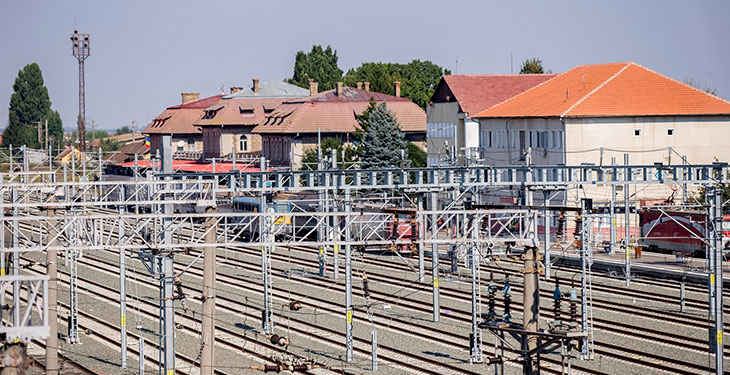Alstom will supply the signaling system, the digital solutions for managing the railway traffic and the electrification ones, within the modernization and rehabilitation project of the second lot (Apața-Cața) on the Brașov-Sighișoara section located on the European Rhine-Danube corridor, according to a press release received by energynomics.ro.
The RailWorks Association consortium, of which Alstom is a part, signed the contract with the beneficiary. The Alstom part of the contract totals around EUR 70 million and the duration of the works is estimated at four years.
The project complements Lots 1 and 3 of the same subsection, awarded to the RailWorks Association consortium in March 2020. In total, Alstom will provide signaling and electrification works on the double railway line covering the 128-kilometer railway distance – totaling over 250 km of modernized railway infrastructure – between Sighișoara and Brașov, two important tourist destinations in Romania.
„Alstom consolidates its leading position in the Romanian railway market, both in the railway signaling segment and in the electrification segment. Covering the entire subsection between Sighișoara and Brașov will provide an efficient operation, ensuring consistency in service quality and coordinated efforts to carry out the works in the best possible way,” said Gabriel Stanciu, Alstom General Manager for Romania, Bulgaria and Moldova.
The new project, which totals 28 km of double railway line, includes optimizing the existing route by building tunnels to reduce travel time, as well as modernizing most of the old line, so that finally passenger trains can run at full speeds of 160 km/h. Alstom is directly responsible for the implementation of all works related to: electronic centralization installations, the European railway signaling system ERTMS Level 2, the GSM-R telecommunications system, passenger announcement and information systems, video surveillance systems and electrification system of railways through electric traction substations and modernization of the catenary.
The most complex part of this project is the construction of two double tunnels (a total of four tunnels, two on each direction of traffic) that total almost 13 km of double line. In these tunnels, Alstom is also responsible for providing the electro-ventilation system to compensate for the lack of natural ventilation, along with a fire-fighting system to ensure full traffic safety.
